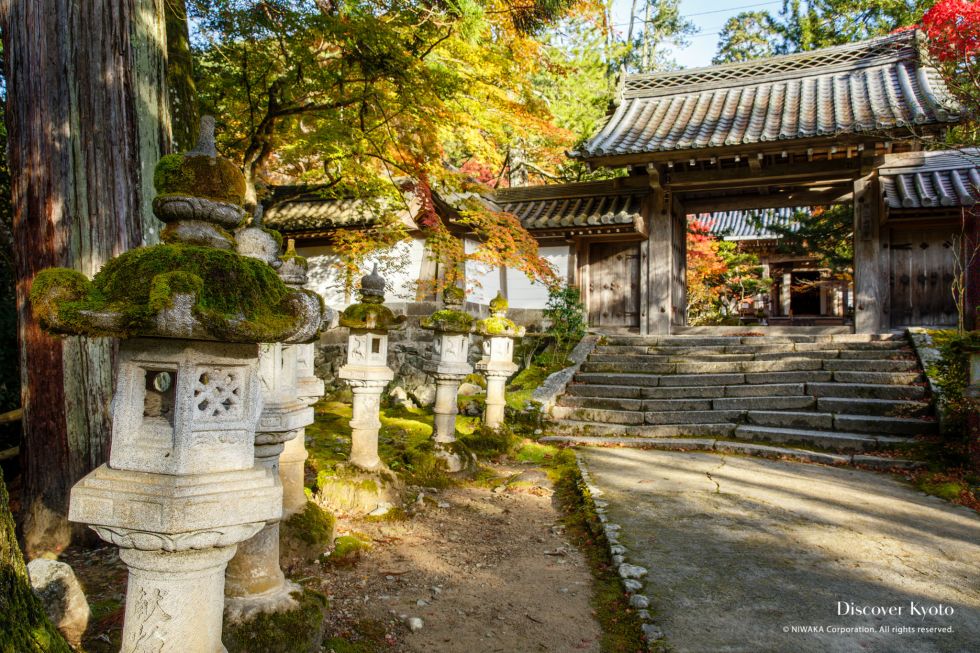Takao

An hour’s ride away from the city proper by bus, Mt. Takao in northwestern Kyoto is a popular tourist destination in summer and autumn known for its fireflies and gorgeous autumn foliage. Home to three historical temples, Mt. Takao makes for a perfect day trip outside of the more bustling central Kyoto. Kōsan-ji, Saimyō-ji, and Jingo-ji each offer different sights and experiences to their visitors, and one can easily walk between them while taking in the lush natural beauty the mountain has to offer – let alone the local foods and charm.

Kōsan-ji

A UNESCO World Heritage Site nestled in the mountains of western Kyoto, Kōsan-ji (or Kōzan-ji) was founded by the Shingon sect monk and scholar Myōe in 1206. Saint Myōe hosted salons at Kōsan-ji attended by the wealthy and cultured, and through such practices accumulated numerous artifacts and items that are now valued as National Treasures, including the famous Chōjū-jinbutsu-giga ("Animal-person Caricatures") picture scroll. The oldest tea field in Japan is also located in a humble plot on the grounds- at one time it was considered the only "true" tea plant to make the drink from. Kōsan-ji takes time to reach by bus from the city center, but it’s worth it for an overwhelmingly natural atmosphere and breathtaking mountain views. The view from the Sekisui-in hall is absolutely gorgeous, particularly in the fall season, and towering, ancient trees line the stone steps that ramble through the mountain forests. Fire and war have ravaged the buildings on the property time and again with the oldest building now dating to the Kamakura period, but the forest seems ageless and offers a glimpse into a life of mountain asceticism.See more

Saimyō-ji

One of the three famous temples of Mt. Takao, Saimyō-ji is located between Kōsan-ji and Jingo-ji, across a picturesque vermilion bridge that stretches over a mountain river surrounded by maple trees. A short climb past the bridge leads visitors to the entrance gate and into the temple proper. The volunteers at Saimyō-ji are friendly and ready to urge visitors to the main hall, where people are allowed to get quite close to the wooden statuary within to observe their fine craftsmanship. Green tea and a sweet can be enjoyed in a side hall in November, and a pleasant side garden features a nice view out over the mountains – particularly splendid in fall or late spring when the azaleas on the mountainside burst into bloom. Before you leave, drop 100 yen at the main hall as a donation to ring the large temple bell outside near the row of stone lanterns!

Jingo-ji

Situated on Mt. Takao northwest of Kyoto City proper, Jingo-ji is a Shingon Buddhist temple that worships Yakushi Nyorai, the Medicine Buddha. Because of the temple's location in the rural mountainside, the scenery is quite lovely, and the temple is famous for its autumn colors. Within the Kondō hall is an impressive show of Buddhist statuary, and the atmosphere is heavy with reverence. The grounds themselves are spacious and offer various sights and halls to investigate, and paths lead through the woods off to sub-shrines and a clifftop viewing point. One of the more fun activities at Jingo-ji is flinging a ceramic yaku-yōke plate from the cliff into the mountain valley below to ward off misfortune. The stone steps leading up to the temple can be quite daunting, but there are restaurants and areas to rest along the way for those who need a breather. Despite its distance, Jingo-ji and surrounding temples offer a great, nature-filled escape from the more crowded city center.See more
